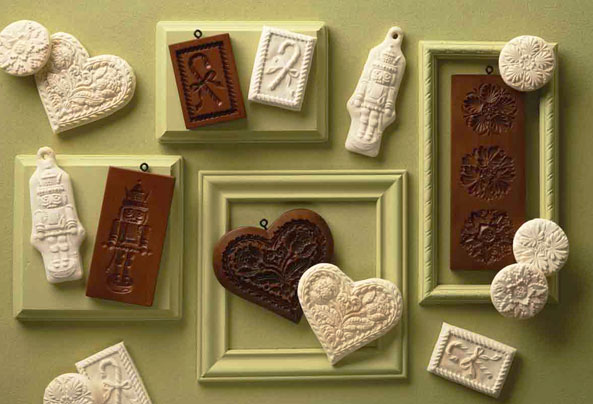Traditional springerle are white, anise-flavored cookies stamped with a mold or rolling pin. Springerle first became popular in16th century Germany before spreading to Alsace and Switzerland. Springerle can be traced to the winter Pagan celebration of Germanic tribes, Julfest, in which animals were sacrificed to the gods for a mild winter and early spring. Poor people brought animal-shaped breads and cookies in lieu of the real ones. Hence, why the molds are associated with the winter season. Later, molds often depicted scenes from the Bible, used to educate the illiterate. Other images included animals, royal family members, mystical figures and symbols.
If you want to make your own springerle, a must-see shop is House on the Hill. They offer a million and one molds and rolling pins. (I may be exaggerating the number a bit, but they have many, many high-quality molds.) I had the pleasure of working with the owner of House on the Hill a bit for the chapter in my book on the history of the decorated cookie (hence, the first paragraph of this post, which pretty much came straight from my book). They were kind enough to provide some photographs that appeared in the chapter. The molds, made of resin and wood composite, are individually hand cast and hand finished, and most are replicas of ancient designs. The site also offers lots of recipes and a link for kids. Be sure to read the touching story of the founding of House on the Hill.


Very yummy looking treats 🙂